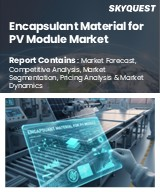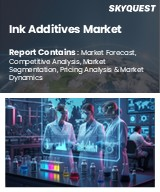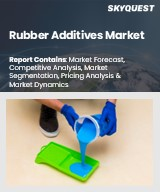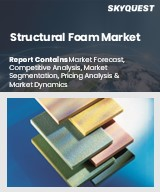
|
시장보고서
상품코드
1603895
열간연탄철(HBI) 첨가제 시장 예측(-2030년) : 제품 유형별, 첨가제 유형별, 형태별, 제조 방법별, 구성별, 용도별, 최종사용자별, 지역별 세계 분석Hot Briquetted Iron Additives Market Forecasts to 2030 - Global Analysis By Product Type, Additive Type, Form, Production Method, Composition, Application, End User and By Geography |
||||||
Stratistics MRC에 따르면, 세계 열간연탄철(HBI) 첨가제 시장은 2024년 42억 달러 규모이며, 예측 기간 동안 연평균 8.3% 성장하여 2030년에는 68억 달러에 달할 것으로 예상됩니다.
열간연탄철(HBI) 첨가제는 제강 효율을 높이고 최종 제품의 전반적인 품질을 향상시키는 등 HBI의 특성을 강화하기 위해 HBI 생산 공정에 통합되는 재료로, 직접환원철(DRI)을 고온에서 압축하여 고밀도의 운반 가능한 연탄을 형성하여 생산되는 고체 형태의 스펀지 철입니다. 고밀도로 운반 가능한 연탄을 형성하여 제조되는 고체 형태의 스펀지 철입니다. 첨가제는 주로 철강 생산용 전기로(EAF)에서 사용되는 중간 제품인 HBI의 생산 및 사용을 최적화하도록 설계되었습니다.
미국 뉴스에 따르면 2019년 미국 일반 가정에서 구입한 포장 식품 및 음료 제품의 절반 이상이 3가지 이상의 첨가물을 함유하고 있으며, 2023년까지 구입한 식품의 약 60%가 색소, 향료, 방부제, 감미료를 함유하고 있다고 합니다.
고급강재에 대한 수요 증가
인프라, 건설, 자동차 등 다양한 산업에서 고급 철강에 대한 수요가 증가함에 따라 HBI 첨가제 시장을 주도하는 주요 요인은 HBI 첨가제는 산업계가 제품의 성능과 내구성을 향상시키기 위해 노력함에 따라 철의 야금학적 특성을 개선하는 데 필수적입니다. 강도, 밀도, 화학 성분과 같은 특성을 최적화함으로써 HBI를 전기 아크로(EAF)의 바람직한 원료로 만들며, HBI 및 관련 첨가제의 필요성은 유연성과 환경적 이점을 바탕으로 한 EAF 제강에 대한 선호도가 높아짐에 따라 더욱 증가하고 있습니다.
변동하는 원자재 가격
열간연탄철(HBI) 첨가제 시장에서 변동하는 원료 가격은 제조업체와 최종사용자에게 큰 도전이 되고 있습니다. 가격 변동은 생산 비용을 증가시켜 공급업체가 안정적인 가격 책정과 수익성을 유지하기 어렵게 만듭니다. 이러한 불확실성은 공급망에 혼란을 야기하고, 제품 지연과 품질 편차를 초래할 수 있습니다. 이해관계자들은 비용이 불투명한 신규 프로젝트를 꺼릴 수 있기 때문에 투자 결정에도 영향을 미칠 수 있습니다. 가격이 급등하면 최종사용자에게 HBI를 추가하는 것이 대체품보다 매력적이지 않을 수도 있습니다. 전반적으로 이러한 변동은 시장 확대, 수용 및 가격의 영향을 받는 제강 공정의 계획을 저해할 수 있습니다.
세계 인프라 프로젝트 확대
고급 철강에 대한 수요는 특히 신흥 경제권에서 에너지, 운송 및 건축 인프라에 대한 막대한 투자로 인해 발생하며, HBI 첨가제는 제강 공정의 효율성을 개선하고 인프라 응용 분야의 엄격한 사양을 충족하는 일정한 품질을 보장하는 데 필수적입니다. 녹색 건축 기술, 정부 프로그램 및 도시화는 모두 이러한 추세를 가속화하는 데 기여하고 있습니다. 또한, 지속가능한 건축자재의 사용은 HBI 첨가제를 통해 가능한 청정 생산 기술과 일치하기 때문에 전 세계 현대 인프라 구축에 필수적인 요소로 자리 잡고 있습니다.
HBI 생산의 지리적 분포의 제한
HBI 생산은 중동, 라틴아메리카, 유럽 일부 지역 등 특정 지역에 집중되어 있어 다른 시장에 대한 공급망 제약이 발생하고 있습니다. 이러한 불균등한 분포는 첨가제 생산자의 필수 원료에 대한 접근을 제한하고, 운송 비용을 높이고, 리드 타임을 늘리며, HBI 생산량이 적은 지역의 철강 제조업체는 수입에 의존하기 때문에 가격과 공급을 예측할 수 없습니다. 또한 인프라 및 기술 수용의 지역적 차이는 HBI 첨가제의 광범위한 사용을 방해하고 세계 시장 확대에 영향을 미칠 수 있습니다.
COVID-19의 영향
COVID-19는 건설, 자동차 등 주요 산업의 철강 수요 감소, 생산 중단, 공급망 혼란으로 인해 열연(HBI) 첨가제 시장에 큰 영향을 미쳤습니다. 이동 제한과 봉쇄로 인해 산업 운영과 인프라 프로젝트가 지연되면서 철강 사용량이 감소했고, 이에 따라 HBI 첨가제 사용량도 감소했습니다. 또한 물류의 어려움과 원자재 부족으로 인해 공급 지연과 비용 상승이 발생했습니다. 그러나 정부의 경기 부양책과 인프라 지출에 힘입어 팬데믹 이후 회복세를 보이면서 새로운 수요가 창출되고 있습니다. 친환경 철강 생산에 대한 집중과 견고하고 지속가능한 공급망으로의 전환은 시장의 장기적인 전망을 개선할 것으로 예상됩니다.
바인더 부문은 예측 기간 동안 가장 큰 시장으로 성장할 것으로 예상됩니다.
바인더 부문은 연탄의 야금학적 성능, 내구성 및 강도를 향상시키는 데 중요한 역할을 하기 때문에 가장 큰 규모를 차지할 것으로 추정됩니다. 산업 성장과 인프라 개선에 힘입어 철강 생산량이 증가하면서 바인더의 사용이 증가하고 있습니다. 또한, 환경 친화적인 제철과 더 높은 품질 기준으로의 전환으로 인해 효율성을 높이는 고급 바인더가 요구되고 있습니다. 또한, 전기 아크로(EAF)의 사용 확대와 친환경 제철에 대한 노력으로 인해 고성능의 친환경 철 연탄 공정용으로 설계된 바인더에 대한 기대가 높아지고 있습니다.
예측 기간 동안 가장 높은 CAGR을 보일 것으로 예상되는 분야는 건설 분야입니다.
건설 및 인프라 프로젝트에는 고품질 철강재가 필요하기 때문에 건설 분야는 예측 기간 동안 가장 높은 CAGR을 기록할 것으로 예상되며, 도로, 교량, 공동주택과 같은 인프라에 대한 정부 투자, 급속한 도시화 및 인구 증가로 인해 HBI 첨가제에 대한 수요가 증가할 것으로 예상됩니다. 강화된 환경법 및 지속가능한 건축 방법은 HBI의 장점과 일치하는 더 깨끗하고 효과적인 철강 생산을 촉진할 것입니다. 스마트 시티 구상과 세계 메가 프로젝트도 시장의 성장 궤도를 가속화하고 있습니다.
가장 큰 점유율을 차지하는 지역
아시아태평양은 특히 중국과 인도와 같은 국가에서 가속화되는 도시화, 산업화 및 인프라 지출에 힘입어 예측 기간 동안 가장 큰 시장 점유율을 차지할 것으로 예상됩니다. HBI와 그 첨가제에 대한 수요는 이 지역의 철강 생산량 증가로 인해 증가하고 있으며, 이는 제조업, 자동차 산업, 건설 산업의 발전에 의해 주도되고 있습니다. 전기 아크로(EAF)의 사용과 지속가능하고 친환경적인 철강 생산을 촉진하는 정부 프로그램도 시장 확대에 기여하고 있습니다.
CAGR이 가장 높은 지역:
북미는 에너지, 자동차, 건설 등의 분야에서 고급 철강에 대한 수요가 증가함에 따라 예측 기간 동안 가장 높은 CAGR을 기록할 것으로 예상됩니다. 이 지역에서는 탄소 배출량을 줄이고 지속가능한 제강 방법을 도입하는 데 중점을 두어 HBI의 사용이 증가하고 첨가제에 대한 요구 사항이 증가하고 있습니다. 전기로(EAF)와 같은 혁신적인 생산 기술에 대한 지출 증가가 시장 확대에 기여하고 있습니다. 또한 강력한 산업 기반과 정부 인프라 프로젝트가 HBI 첨가제 시장을 뒷받침하고 있습니다.
무료 맞춤형 서비스:
이 보고서를 구독하는 고객은 다음과 같은 무료 맞춤화 옵션 중 하나를 사용할 수 있습니다.
- 기업 개요
- 추가 시장 기업 종합 프로파일링(최대 3개사까지)
- 주요 기업 SWOT 분석(최대 3개사)
- 지역 세분화
- 고객의 관심에 따른 주요 국가별 시장 추정치, 예측, CAGR(주: 타당성 검토에 따른)
- 경쟁사 벤치마킹
- 제품 포트폴리오, 지리적 입지, 전략적 제휴를 기반으로 한 주요 기업 벤치마킹
목차
제1장 주요 요약
제2장 서문
- 개요
- 이해관계자
- 조사 범위
- 조사 방법
- 데이터 마이닝
- 데이터 분석
- 데이터 검증
- 조사 접근법
- 조사 정보 출처
- 1차 조사 정보 출처
- 2차 조사 정보 출처
- 가정
제3장 시장 동향 분석
- 성장 촉진요인
- 성장 억제요인
- 기회
- 위협
- 제품 분석
- 용도 분석
- 최종사용자 분석
- 신흥 시장
- COVID-19의 영향
제4장 Porter's Five Forces 분석
- 공급 기업의 교섭력
- 구매자의 교섭력
- 대체품의 위협
- 신규 참여업체의 위협
- 경쟁 기업 간의 경쟁 관계
제5장 세계의 열간연탄철(HBI) 첨가제 시장 : 제품 유형별
- 바인더
- 플럭스제
- 탄소질 재료
- 환원제
- 산화방지제/안정제
- 합금 원소
- 탈산제
- 탈황제
- 기타 제품 유형
제6장 세계의 열간연탄철(HBI) 첨가제 시장 : 첨가제 유형별
- 금속 첨가제
- 비금속 첨가제
제7장 세계의 열간연탄철(HBI) 첨가제 시장 : 형태별
- 분말
- 브리켓
- 과립
- 기타 형태
제8장 세계의 열간연탄철(HBI) 첨가제 시장 : 제조 방법별
- 핫 브리켓
- 콜드 브리켓
제9장 세계의 열간연탄철(HBI) 첨가제 시장 : 구성별
- 철 함유량
- 탄소 함유량
- 황화물과 인산염
- 기타 구성
제10장 세계의 열간연탄철(HBI) 첨가제 시장 : 용도별
- 전기 아크로
- 산소로
- 용광로
- 주조로
- 기타 용도
제11장 세계의 열간연탄철(HBI) 첨가제 시장 : 최종사용자별
- 건설
- 자동차
- 에너지
- 기계·설비
- 기타 최종사용자
제12장 세계의 열간연탄철(HBI) 첨가제 시장 : 지역별
- 북미
- 미국
- 캐나다
- 멕시코
- 유럽
- 독일
- 영국
- 이탈리아
- 프랑스
- 스페인
- 기타 유럽
- 아시아태평양
- 일본
- 중국
- 인도
- 호주
- 뉴질랜드
- 한국
- 기타 아시아태평양
- 남미
- 아르헨티나
- 브라질
- 칠레
- 기타 남미
- 중동 및 아프리카
- 사우디아라비아
- 아랍에미리트
- 카타르
- 남아프리카공화국
- 기타 중동 및 아프리카
제13장 주요 발전
- 계약, 파트너십, 협업, 합작투자
- 인수와 합병
- 신제품 발매
- 사업 확대
- 기타 주요 전략
제14장 기업 개요
- ArcelorMittal
- Baosteel Group
- Cleveland-Cliffs Inc.
- Comsigua CA
- Hyundai Steel
- Jindal Shadeed Iron & Steel LLC
- JSW Group
- Kobe Steel
- Libyan Iron and Steel
- Metalloinvest MC LLC
- Nippon Steel
- Orinoco Iron S.C.S.
- Qatar Steel
- Shagang Group
- Sumitomo Metal Industries
- Tata Steel
- Voestalpine Group
According to Stratistics MRC, the Global Hot Briquetted Iron (HBI) Additives Market is accounted for $4.2 billion in 2024 and is expected to reach $6.8 billion by 2030 growing at a CAGR of 8.3% during the forecast period. Hot Briquetted Iron (HBI) Additives are materials incorporated into the production process of HBI to enhance its properties, such as increasing its efficiency in steelmaking and improving the overall quality of the final product. HBI is a solid form of sponge iron produced by compressing direct reduced iron (DRI) at high temperatures to form dense, transportable briquettes. The additives are designed to optimize the production and use of HBI, which is an intermediate product used primarily in electric arc furnaces (EAF) for steel production.
According to US News, over half of the packaged food and beverage products purchased by US households in 2019 contained three or more additives. By 2023, approximately 60% of the purchased foods included coloring or flavoring agents, preservatives, and sweeteners.
Market Dynamics:
Driver:
Increasing demand for high-quality steel
The growing need for premium steel in a variety of industries, such as infrastructure, construction, and automotive, is a major factor propelling the market for HBI additives. HBI additives are essential to improving the metallurgical characteristics of iron as industries work to improve product performance and durability. By optimizing properties including strength, density, and chemical composition, these additives make HBI a desirable feedstock for electric arc furnaces (EAFs). The need for HBI and its related additives is further fuelled by the growing preference for EAF steelmaking, which is motivated by its flexibility and environmental benefits.
Restraint:
Fluctuating raw material prices
For manufacturers and end users, fluctuating raw material costs in the market for Hot Briquetted Iron (HBI) additives pose significant challenges. Price fluctuation makes it harder for suppliers to maintain steady pricing and profitability because it raises production costs. Supply networks may be disrupted by this uncertainty, which could result in delays and uneven product quality. Investment decisions are also impacted since stakeholders may be reluctant to commit to new projects when costs are uncertain. Higher prices could make HBI additions less appealing to end users than alternatives. Overall, these variations impede market expansion, acceptance, and planning in steelmaking processes that are influenced by price.
Opportunity:
Expanding global infrastructure projects
The need for premium steel is being driven by enormous investments in energy, transportation, and building infrastructure, especially in emerging economies. HBI additives are essential for improving steelmaking processes' efficiency and guaranteeing constant quality to satisfy the demanding specifications of infrastructure applications. Green building techniques, government programs, and urbanization are all contributing to this trend's acceleration. Furthermore, the use of sustainable building materials is in line with the cleaner production techniques made possible by HBI additives, which makes them crucial for the development of contemporary infrastructure across the world.
Threat:
Limited geographical distribution of HBI production
HBI production is concentrated in specific regions, such as the Middle East, Latin America, and parts of Europe, creating supply chain constraints for other markets. This unequal distribution restricts additive producers' access to essential raw materials, raises transportation costs, and lengthens lead times. Pricing and supply are unpredictable for steelmakers in areas with low HBI production due to their reliance on imports. Additionally, regional differences in infrastructure and technology acceptance can hinder HBI additives from being widely used, which could have an impact on worldwide market expansion.
Covid-19 Impact
The COVID-19 pandemic had a major effect on the market for hot briquetted iron (HBI) additives by lowering demand for steel in important industries like construction and automotive, stopping production, and upsetting supply networks. Due to travel restrictions and lockdowns, industrial operations and infrastructure projects were delayed, which reduced the use of steel and, in turn, HBI additives. Additionally, supply delays and higher costs were caused by logistical difficulties and shortages of raw materials. However new demand is being generated by the post-pandemic recovery, which is being supported by government stimulus plans and infrastructure expenditures. It is anticipated that a focus on green steel production and a move toward robust and sustainable supply chains will improve the market's long-term prospects.
The binder segment is expected to be the largest during the forecast period
The binder segment is estimated to be the largest, due to their vital role in improving the metallurgical performance, durability, and strength of briquettes. Increased steel production, fuelled by industrial growth and infrastructure, encourages the use of binder. Advanced binders that increase efficiency are additionally urged by the move to more environmentally friendly steelmaking and higher quality standards. Furthermore, prospects for binders designed for high-performance and environmentally friendly iron briquetting processes are created by the growing use of electric arc furnaces (EAF) and green steel efforts.
The construction segment is expected to have the highest CAGR during the forecast period
The construction segment is anticipated to witness the highest CAGR during the forecast period, because of the great need for high-quality steel in construction and infrastructure projects. The need for HBI additives rises as a result of government investments in infrastructure, such as roads, bridges, and residential complexes, as well as rapid urbanization and population expansion. Stricter environmental laws and sustainable building methods also promote cleaner and more effective steel production, which is consistent with HBI's advantages. Smart city initiatives and global mega-projects also accelerate the market's growth trajectory.
Region with largest share:
Asia Pacific is expected to have the largest market share during the forecast period driven by accelerating urbanization, industrialization, and infrastructure spending, especially in nations like China and India. The need for HBI and its additives is increased by the region's rising steel production, which is driven by the developing manufacturing, automotive, and construction industries. The use of electric arc furnaces (EAF) and government programs promoting sustainable and green steel production also contribute to the market's expansion.
Region with highest CAGR:
North America is projected to witness the highest CAGR over the forecast period, owing to growing need for premium steel in sectors like energy, automotive, and construction. HBI use is increased and the requirement for additives is increased by the region's emphasis on cutting carbon emissions and implementing sustainable steelmaking methods. Increased spending on innovative production technology, such as electric arc furnaces (EAF), contributes to market expansion. Furthermore, a strong industrial base and government infrastructure projects support the market for HBI additives.
Key players in the market
Some of the key players profiled in the Hot Briquetted Iron (HBI) Additives Market include ArcelorMittal, Baosteel Group, Cleveland-Cliffs Inc., Comsigua CA, Hyundai Steel, Jindal Shadeed Iron & Steel LLC, JSW Group, Kobe Steel, Libyan Iron and Steel, Metalloinvest MC LLC, Nippon Steel, Orinoco Iron S.C.S., Qatar Steel, Shagang Group, Sumitomo Metal Industries, Tata Steel, and Voestalpine Group.
Key Developments:
In September 2024, Nippon Steel Announces Governance Policy for U. S. Steel. Nippon Steel continues to believe that the Transaction will enhance American national security by reinforcing U. S. Steel and its domestic production capabilities, bringing cutting-edge technologies into the United States, and ultimately making the American industrial base and supply-chain.
In April 2022, ArcelorMittal acquired 80% shareholding in Voestalpine's world-class Hot Briquetted Iron ('HBI') plant located in Corpus Christi, Texas. This acquisition would help the company to strengthen its position and guarantee the security of supply to ArcelorMittal facilities, including AM/NS Calvert in Alabama.
Product Types Covered:
- Binder
- Fluxing Agents
- Carbonaceous Materials
- Reducing Agents
- Antioxidants/Stabilizers
- Alloying Elements
- Deoxidizers
- Desulfurizers
- Other Product Types
Additive Types Covered:
- Metallic Additives
- Non-Metallic Additives
Forms Covered:
- Powders
- Briquettes
- Granules
- Other Forms
Production Methods Covered:
- Hot Briquetting
- Cold Briquetting
Compositions Covered:
- Iron Content
- Carbon Content
- Sulfides & Phosphates
- Other Compositions
Applications Covered:
- Electric Arc Furnace
- Basic Oxygen Furnace
- Blast Furnace
- Foundry Furnace
- Other Applications
End Users Covered:
- Construction
- Automotive
- Energy
- Machinery & Equipment
- Other End Users
Regions Covered:
- North America
- US
- Canada
- Mexico
- Europe
- Germany
- UK
- Italy
- France
- Spain
- Rest of Europe
- Asia Pacific
- Japan
- China
- India
- Australia
- New Zealand
- South Korea
- Rest of Asia Pacific
- South America
- Argentina
- Brazil
- Chile
- Rest of South America
- Middle East & Africa
- Saudi Arabia
- UAE
- Qatar
- South Africa
- Rest of Middle East & Africa
What our report offers:
- Market share assessments for the regional and country-level segments
- Strategic recommendations for the new entrants
- Covers Market data for the years 2022, 2023, 2024, 2026, and 2030
- Market Trends (Drivers, Constraints, Opportunities, Threats, Challenges, Investment Opportunities, and recommendations)
- Strategic recommendations in key business segments based on the market estimations
- Competitive landscaping mapping the key common trends
- Company profiling with detailed strategies, financials, and recent developments
- Supply chain trends mapping the latest technological advancements
Free Customization Offerings:
All the customers of this report will be entitled to receive one of the following free customization options:
- Company Profiling
- Comprehensive profiling of additional market players (up to 3)
- SWOT Analysis of key players (up to 3)
- Regional Segmentation
- Market estimations, Forecasts and CAGR of any prominent country as per the client's interest (Note: Depends on feasibility check)
- Competitive Benchmarking
- Benchmarking of key players based on product portfolio, geographical presence, and strategic alliances
Table of Contents
1 Executive Summary
2 Preface
- 2.1 Abstract
- 2.2 Stake Holders
- 2.3 Research Scope
- 2.4 Research Methodology
- 2.4.1 Data Mining
- 2.4.2 Data Analysis
- 2.4.3 Data Validation
- 2.4.4 Research Approach
- 2.5 Research Sources
- 2.5.1 Primary Research Sources
- 2.5.2 Secondary Research Sources
- 2.5.3 Assumptions
3 Market Trend Analysis
- 3.1 Introduction
- 3.2 Drivers
- 3.3 Restraints
- 3.4 Opportunities
- 3.5 Threats
- 3.6 Product Analysis
- 3.7 Application Analysis
- 3.8 End User Analysis
- 3.9 Emerging Markets
- 3.10 Impact of Covid-19
4 Porters Five Force Analysis
- 4.1 Bargaining power of suppliers
- 4.2 Bargaining power of buyers
- 4.3 Threat of substitutes
- 4.4 Threat of new entrants
- 4.5 Competitive rivalry
5 Global Hot Briquetted Iron (HBI) Additives Market, By Product Type
- 5.1 Introduction
- 5.2 Binder
- 5.3 Fluxing Agents
- 5.4 Carbonaceous Materials
- 5.5 Reducing Agents
- 5.6 Antioxidants/Stabilizers
- 5.7 Alloying Elements
- 5.8 Deoxidizers
- 5.9 Desulfurizers
- 5.10 Other Product Types
6 Global Hot Briquetted Iron (HBI) Additives Market, By Additive Type
- 6.1 Introduction
- 6.2 Metallic Additives
- 6.3 Non-Metallic Additives
7 Global Hot Briquetted Iron (HBI) Additives Market, By Form
- 7.1 Introduction
- 7.2 Powders
- 7.3 Briquettes
- 7.4 Granules
- 7.5 Other Forms
8 Global Hot Briquetted Iron (HBI) Additives Market, By Production Method
- 8.1 Introduction
- 8.2 Hot Briquetting
- 8.3 Cold Briquetting
9 Global Hot Briquetted Iron (HBI) Additives Market, By Composition
- 9.1 Introduction
- 9.2 Iron Content
- 9.3 Carbon Content
- 9.4 Sulfides & Phosphates
- 9.5 Other Compositions
10 Global Hot Briquetted Iron (HBI) Additives Market, By Application
- 10.1 Introduction
- 10.2 Electric Arc Furnace
- 10.3 Basic Oxygen Furnace
- 10.4 Blast Furnace
- 10.5 Foundry Furnace
- 10.6 Other Applications
11 Global Hot Briquetted Iron (HBI) Additives Market, By End User
- 11.1 Introduction
- 11.2 Construction
- 11.3 Automotive
- 11.4 Energy
- 11.5 Machinery & Equipment
- 11.6 Other End Users
12 Global Hot Briquetted Iron (HBI) Additives Market, By Geography
- 12.1 Introduction
- 12.2 North America
- 12.2.1 US
- 12.2.2 Canada
- 12.2.3 Mexico
- 12.3 Europe
- 12.3.1 Germany
- 12.3.2 UK
- 12.3.3 Italy
- 12.3.4 France
- 12.3.5 Spain
- 12.3.6 Rest of Europe
- 12.4 Asia Pacific
- 12.4.1 Japan
- 12.4.2 China
- 12.4.3 India
- 12.4.4 Australia
- 12.4.5 New Zealand
- 12.4.6 South Korea
- 12.4.7 Rest of Asia Pacific
- 12.5 South America
- 12.5.1 Argentina
- 12.5.2 Brazil
- 12.5.3 Chile
- 12.5.4 Rest of South America
- 12.6 Middle East & Africa
- 12.6.1 Saudi Arabia
- 12.6.2 UAE
- 12.6.3 Qatar
- 12.6.4 South Africa
- 12.6.5 Rest of Middle East & Africa
13 Key Developments
- 13.1 Agreements, Partnerships, Collaborations and Joint Ventures
- 13.2 Acquisitions & Mergers
- 13.3 New Product Launch
- 13.4 Expansions
- 13.5 Other Key Strategies
14 Company Profiling
- 14.1 ArcelorMittal
- 14.2 Baosteel Group
- 14.3 Cleveland-Cliffs Inc.
- 14.4 Comsigua CA
- 14.5 Hyundai Steel
- 14.6 Jindal Shadeed Iron & Steel LLC
- 14.7 JSW Group
- 14.8 Kobe Steel
- 14.9 Libyan Iron and Steel
- 14.10 Metalloinvest MC LLC
- 14.11 Nippon Steel
- 14.12 Orinoco Iron S.C.S.
- 14.13 Qatar Steel
- 14.14 Shagang Group
- 14.15 Sumitomo Metal Industries
- 14.16 Tata Steel
- 14.17 Voestalpine Group



















